A Two-Circle Calendar
The Real Reason Why Spectacles Were So Often Depicted in Ancient Shrines
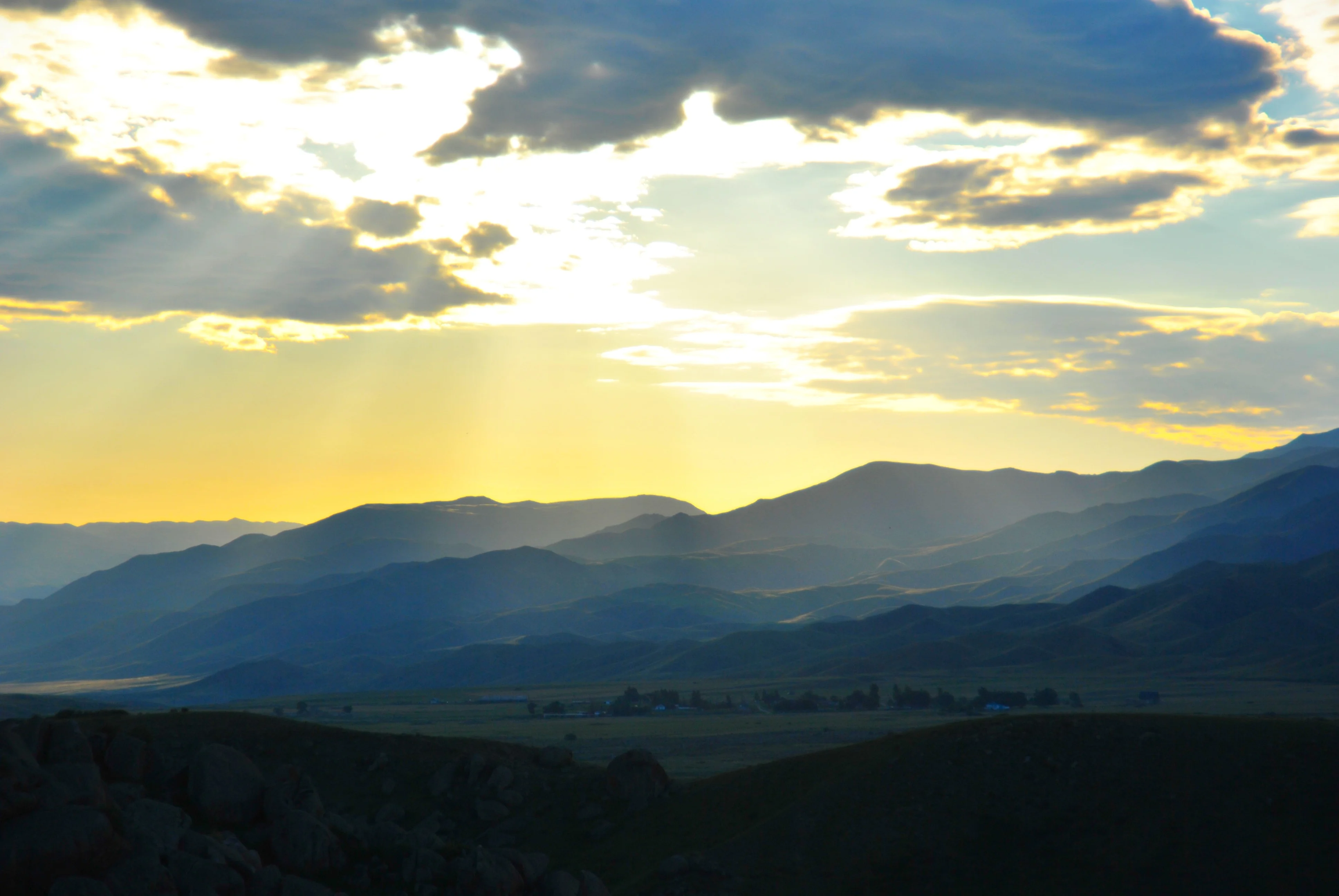
Sunrise. Bayanjürek Mountains/Olga Gumirova
For those who know how to read petroglyphs, it will not be difficult to identify the points of the compass in a sanctuary. All they have to do is look for goggle-shaped symbols, known as ‘solar signs’, which consist of two connected rings with a straight line between them among the drawings.
These solar rings can be found in almost every sanctuary that has Bronze Age petroglyphs. Archeologists have recorded such signs in Akkaynar and Tamgaly-Tas (Chu-Ili Range, Almaty region), Quljabasy (Chu-Ili Range, Jambyl region), Qoybagar and Qoshkar-Ata (Karatau Mountains, Turkestan region), Ordaqul, Eshkiölmes, Terekti (foothills of Dzungarian Alatau, Jetysu region), but they are especially numerous in the high mountain cluster of Saimaluu Tash (Kyrgyzstan).
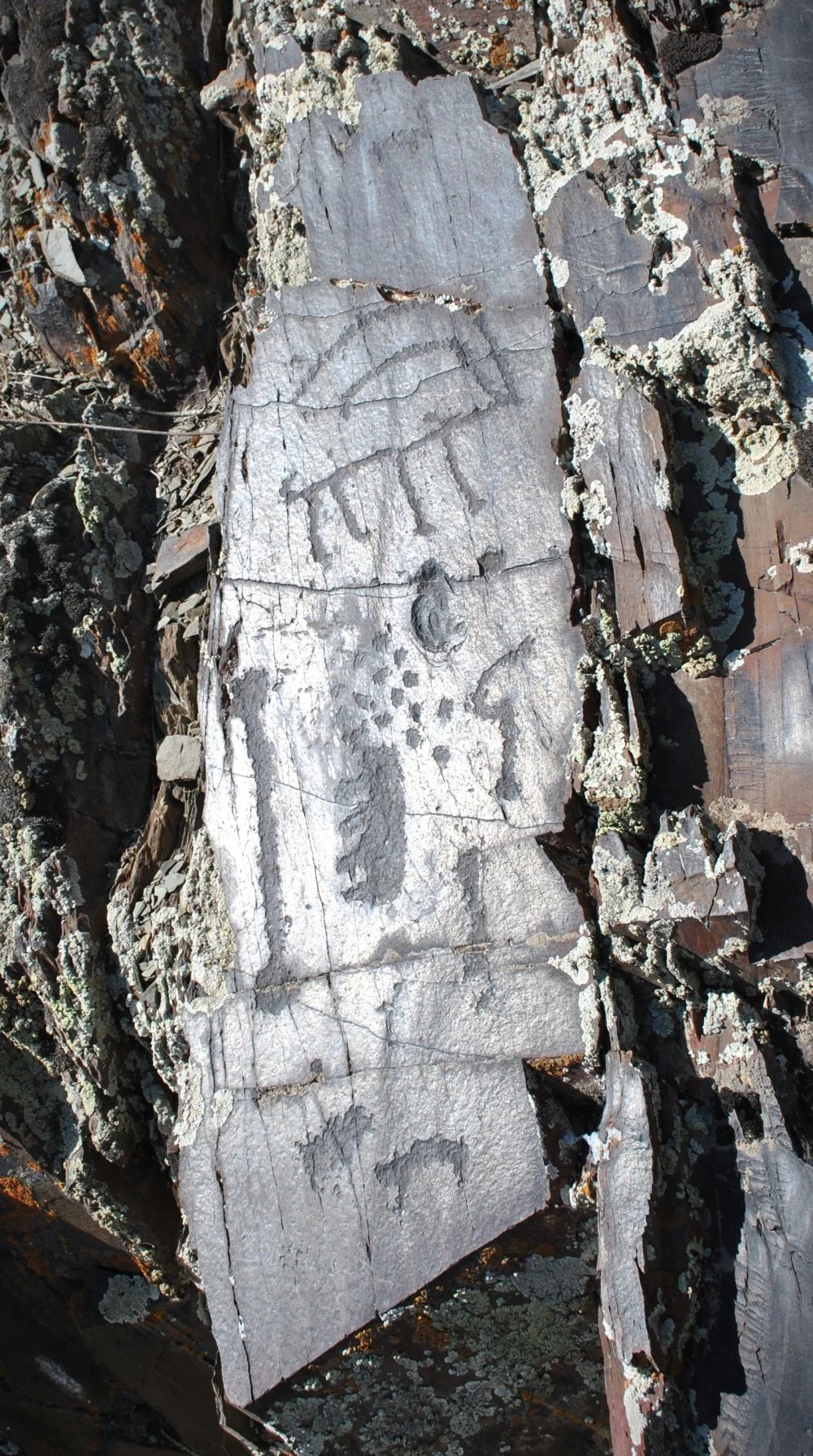
Petroglyphs of Akkaynar/Olga Gumirova
The sun played an important role in the lives of ancient people. The well-being of the tribe, and often life itself, depended on the star, hence it was deified. For thousands of years, people have closely observed the sun, trying to predict the weather and understand the principle of seasonal change. On the basis of the knowledge they gained, they made the simplest schematic calendars, which reflected the main phases of movement of the observed object. One such scheme is the goggle-shaped signs. At present, we do not have a full understanding of the sacral and pragmatic content of these symbols, but there are some theories.
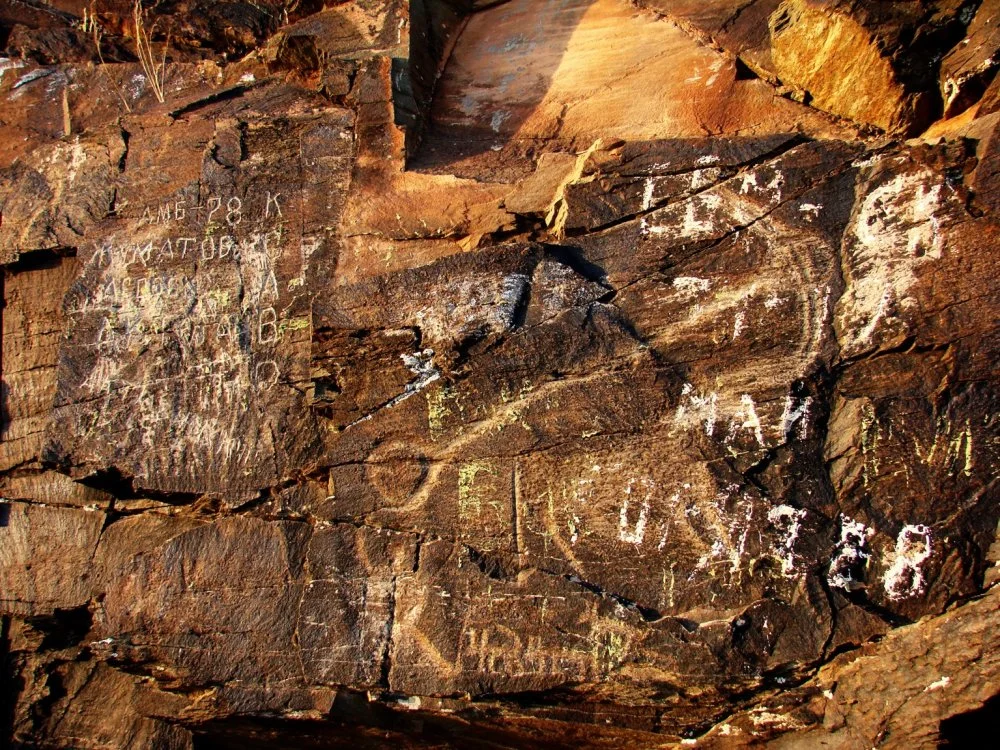
Petroglyphs of Aqqaynar/Olga Gumirova
According to one version, which is supported by many archeologists, the goggle-shaped symbols may have originated from a simplified image of a cart or chariot symbolizing the sun. According to another, they may have come from psalias, which were also highly venerated in ancient times. A simpler option is also possible—the ancients schematically marked the position of the sun at important moments in their lives. The possibility that they were related to the performance of rites or magical rituals is suggested by the location of the goggle-shaped signs in the sanctuaries. Most often, they were placed in the central part of cult drawings or next to such drawings.
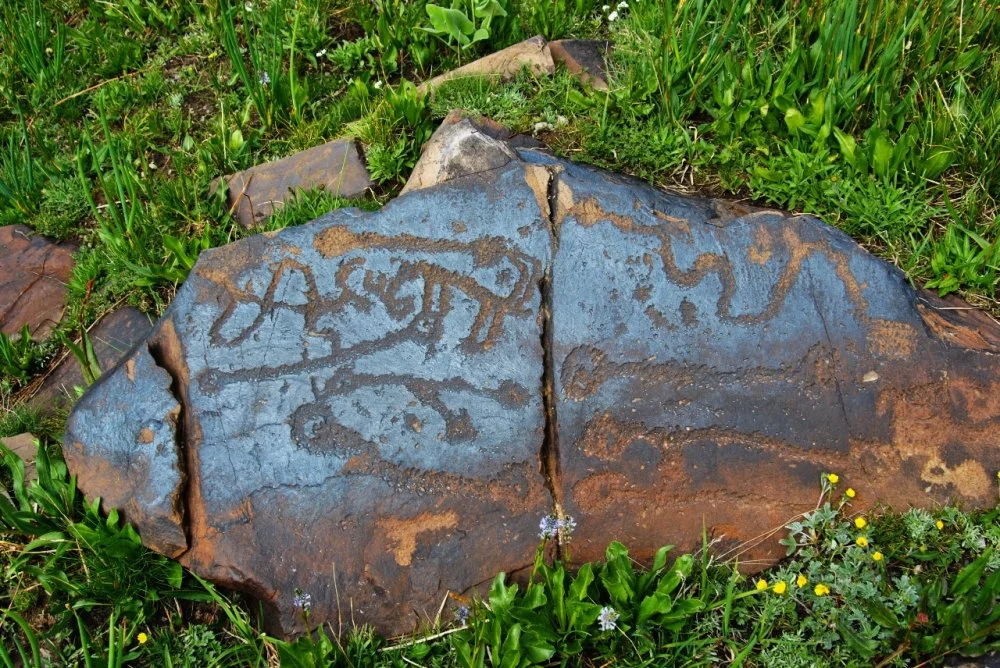
Saimyltas/Olga Gumirova
Unfortunately, detailed studies of petroglyphs with goggle-shaped symbols involving paleoastronomers have not been conducted in Kazakhstan as yet, but according to preliminary data, we can assume that the most common goggle-shaped symbols are those corresponding to the position of the sun on the days of the solstice and the autumnal and vernal equinoxes. Most likely, in addition to their sacred role, the spectacle-shaped signs also had a purely practical function—to announce the beginning of the change of seasons. This is confirmed by visual observations of archeologists. Interestingly, the accuracy of the definition of the points of sunrise and sunset on the day of the summer solstice or the days of the equinox is very high, and the goggle-shaped signs can be used for orientation even today, with some correction.
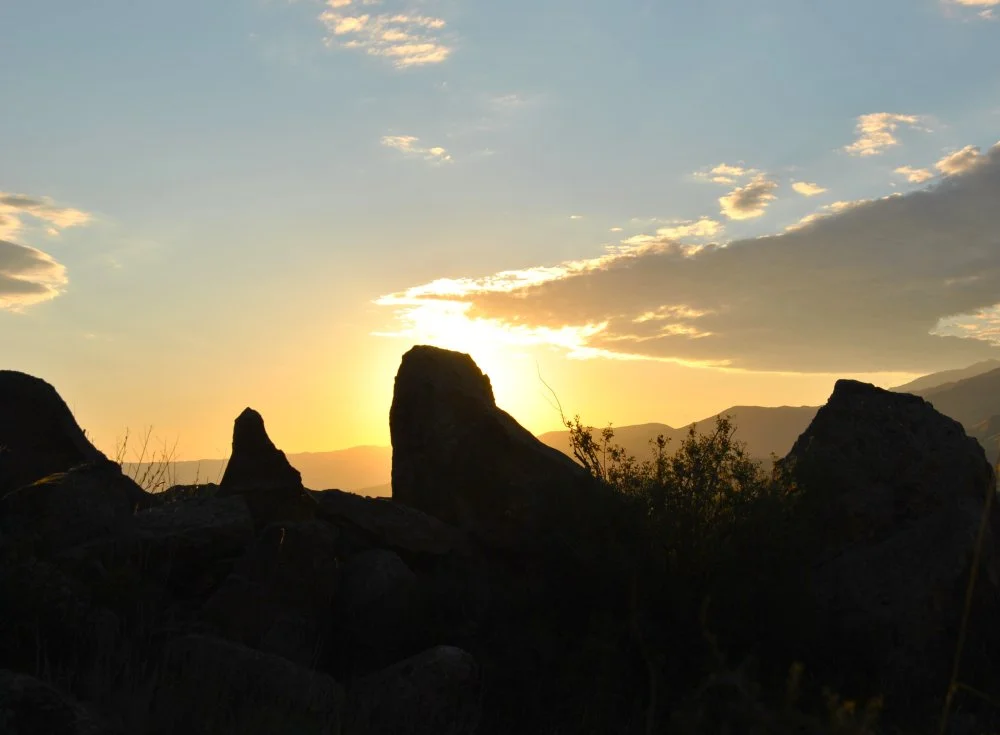
Tasbas. Bayanjürek Mountains/Olga Gumirova



